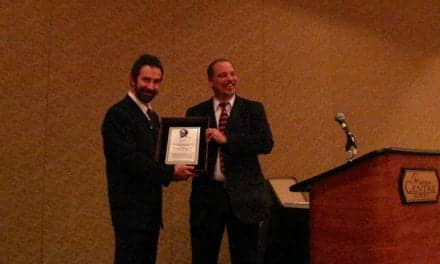New tests will be geared towards diagnosing single-exposure hearing loss
Aryn Kamerer, assistant professor in Communicative Disorders and Deaf Education at USU and director of the Hearing Health Laboratory, has received a grant from the National Institute on Deafness and Other Communication Disorders to develop new hearing tests that can diagnose single-exposure hearing loss.

It is well known that repeated exposure to loud sounds such as heavy machinery or loud concerts will slowly cause hearing loss over time. However, new research suggests that even a single exposure to a sound loud enough to cause your ears to ring or feel muffled can result in permanent damage. Sounds such as close-range gunfire without hearing protection can cause the hearing nerve to separate from the inner ear, leading to hearing loss.
Unlike hearing damage caused by noise exposure over time, this single intense noise exposure may manifest as difficulty understanding conversations in noisy backgrounds. According to Kamerer, current hearing tests are designed to detect inability to hear very quiet sounds and are therefore not as reliable in diagnosing this type of damage.
“Up to 10% of patients who get their hearing tested because of hearing concerns end up with a diagnosis of normal hearing,” she said. “The goal of this project is to see if there are some quick and easy tests that can diagnose this kind of damage so that we can help people who may be able to hear just fine in quiet environments but have trouble understanding speech when there is background noise.”
Kamerer is collaborating on the grant with Stephen T. Neely and Sara E. Harris, researchers at Boys Town National Research Hospital in Omaha, Nebraska. The team is currently working to develop simple clinical hearing tests that can provide more information about damage to the inner ear and hearing nerve. Later on, they will be working with clinicians and audiologists to implement the new hearing tests during initial hearing exams.
Early detection and treatment of hearing loss has many implications for patient health, including helping prevent cognitive decline in older adults. Kamerer is hopeful that developing a better understanding of the hearing pathway and the unique hearing difficulties faced by individuals will help clients receive timely treatment and spur development of new treatments for hearing loss.
Source: Utah State University
Images: Utah State University, Photo 68704381 © Lianna2013 | Dreamstime.com





